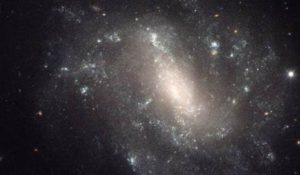
American space agency NASA is getting ready to launch the world’s first mission dedicated to study rapidly spinning neutron stars.
Called the Neutron Star Interior Composition Explorer (NICER), the mission will be launched through SpaceX CRS-11, a cargo resupply mission, using Falcon-9 rocket. SpaceX CRS-11 was earlier scheduled to be launched on June 1, but the launch was delayed due to lightning strike near the launch area. The lift-off has now been rescheduled for Saturday.
NICER will be installed on ISS as an external attached payload, and then it will commence observing neutron stars—the known densest objects in universe. The mission will pay special attention on pulsars—a type of neutron stars that appear to wink on and off. Neutron stars contain ultra-dense matter and are at the threshold of collapse into black holes. Neutron stars and pulsars are the remnants of massive stars that exploded and collapsed into super-dense spheres, after finishing off their nuclear fuel. According to NASA, NICER will also test technology that relies on pulsars as navigation beacons.
“The timing of this launch is apropos,” said Keith Gendreau, a scientist at NASA’s Goddard Space Flight Center in Greenbelt, Maryland who led the mission’s development.
The existence of neutron stars and pulsars was theoretically proposed in 1939, before astronomers actually discovered them in 1967.
It is likely that by July 25, the NICER mission team should have collected enough data “to make a little bit of a splash,” said NICER Deputy Principal Investigator Zaven Arzoumanian.
“The nature of matter under these conditions is a decades-old unsolved problem,” Gendreau said.
“Theory has advanced a host of models to describe the physics governing the interiors of neutron stars. With NICER, we can finally test these theories with precise observations,” Gendreau added.